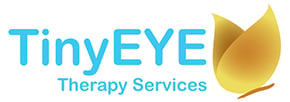"Excellence is the unlimited ability to improve the quality of what you have to offer."
-Rick Pitino
Commitment to service excellence requires a forward thinking, always evolving, stare yourself straight in the face approach. A good helping of humility goes a long way, too. It is my relentless mission to give communities access to quality speech services .... and to give speech-language pathologists a means to reach these communities. Building an on-line speech therapy interface has rendered geography powerless. However, my team and I have learned some critical lessons about using this technology.
In the beginning, I used to say that all you need for on-line therapy is a head-set, web-camera, and high-speed internet. Yes that gave us a means to provide remote services, but we were determined to make it even better. Below, I give you a quick cheat sheet for ensuring your computer exceeds the minimum requirements for providing excellent remote therapy services. Keep in mind that the person who you are connecting with also requires the same standards to ensure optimal services. If you or your recipient can not achieve the standards, there may be some intermittent video freezing and delays in hearing the speaker.
CPU or Processor
CPU stands for central processing unit. It is the brains of the computer and is often referred to as the processor. Your CPU works by executing a series of stored instructions known as a program. It is an important element for seamless, quality computer interactions.
For successful on-line therapy that supports high quality video, your computer must have a minimum of 3.0 GHz. You can find out if your computer has this by trying the following:
If you have Vista
• Click on the start icon on your screen
• Right click on your the word ‘Computer'
• Click on properties or system properties
If you have XP
• Click on the start icon on your screen
• Right click on your ‘My Computer'
• Click on properties
If you have Mac
• Go to the top left screen of the apple icon
• Select "about this Mac"
Please note that if you have a dual processor, the CPU number you see has a different meaning - it is the processing speed of each core. A dual-core processor with two cores at 2GHz may perform very nearly as quickly as a single core of 4GHz. This all assumes, however, that the software has been designed to take advantage of available parallelism. If not, there will not be any speedup at all. However, the processor will multitask better since it can run two programs at once, one on each core. I happen to have 1.90 GHz on my computer; however, I have a dual processor.
Bandwidth
Bandwidth impacts how quickly we can hear and see each other and the games on-line - it indicates the speed of the on-line connection and interactions. The minimum bandwidth requirements for the provider and recipient of on-line therapy are:
Incoming signal: 150 kbps (more is better)
Outgoing signal: 150 kbps (more is better)
Delay: 200 ms (less is better)
You can test your bandwidth at:
http://www.tinyeye.com/avsetup/TestSetup.html
To maximize the strength of your bandwidth for on-line therapy, consider the following options:
• SCHEDULE: Schedule on-line sessions when other school computers are not also accessing the internet. For example, avoid scheduling therapy at the same time as a classroom's e-learning class.
• CLOSE PROGRAMS: Close all other programs that may be open on the computer. These programs may slow down computer processing speed. Only the window that is using your online therapy software should be open. Close all documents and emails.
• BW TOOL: Our therapists have a bandwidth adjuster on their screens. We often advise them to turn their BW setting to ‘slowest' for connections that are not optimal.
• DEDICATED LINE: Dedicate an internet line to the school that is not dependent on a community network. Sharing bandwidth decreases the quality of the sessions.
Equipment
• Web camera with 15 FPS (frames per second) capture rate
• Headset with attached Microphone
• Analog headsets are a good option for people who want to use a splitter. A splitter enables two headsets to plug into the computer so that the student's helper can also hear the therapist during the session. This is a great way to indirectly train the support staff about using strategies to support the student. It also enables the staff to have a clear picture of what happens during the session and how the child is responding. It is very helpful to have the computer's speaker turned off so that there is no echo. The headset allows the speakers to be off, yet the staff or parent can still hear the session.
• USB headsets provide quality sound, but they do not have a splitter option.
If you have Windows Vista:
• 2 GB of RAM
• P4 with 3GHZ processor or equivalent (or 2.0 GhZ Dual Core)
If you have Windows XP:
• 1GB of RAM
• P4 with 3GHZ processor or equivalent ( (or 2.0 GhZ Dual Core)
If you have Mac OS X 10.4 (Tiger) or 10.5 (Leopard):
• 1 GB of RAM
• Dual Core Processor
This is a source for purchasing toy webcams:
http://www.sourcingmap.com/toys-red-dog-usb-digital-video-webcam-web-camera-p-17865.html
We recommend the Logitech 9000 series of web cameras, as they have excellent video capture technology.
http://www.logitech.com/index.cfm/webcam_communications/webcams/devices/3056&cl=US,EN
The Personal Connection
Bottom line, an effective on-line therapy session will not happen without dedicated people who support the student. Speech-language pathologists tend to be naturally talented at engaging children and supporting them in reaching their potential. To provide outstanding on-line services, our SLPs become competent remote therapy providers. In addition to ongoing coaching and support, the SLPs start off with a strong dose of training:
• The SLPs complete an in-depth online tech-check with a member of our support team from our headquarters. Our team is able to remotely assess the readiness of the SLP's computer. Any obstacles to online service excellence are eliminated. Our SLPs do not start therapy until their computer system has proven to meet or exceed our standards.
• The SLPs complete a series of software training sessions with our Make a Difference Coach. This coach meets online with our new SLPs to introduce them to their online office and to lead them through the steps for providing effective and engaging online therapy services. Further training reinforces trouble shooting skills, ethical considerations, and how to truly make on-line therapy an empowering and engaging experience for the student. Yes we make a difference. We grow smiles, mend spirits, and engage children in their lives...it feels good.
We also connect with each school before therapy begins to ensure they are set up for success:
• Our support team completes remote tech-checks with each school and offers support if system improvement is necessary.
• Key contact people at each school receive an on-line meet and greet so that they too can experience the on-line therapy adventure. They login just as the students will do. Adults seem to have just as much fun with the games...smiles and virtual high-fives all around!
• Each school appoints a speech-language program assistant. This person collaborates with us regarding scheduling, informed consent forms, and absences. In addition, he or she accompanies the students to the therapy sessions. In some schools, this person also wears a headset to hear the sessions, then meets the child again later in the week to practice the therapy games in the virtual backpack.
This post will continue to be updated and re-posted as new information is discovered. In the spirit of learning, I invite readers to share information that also may contribute to service excellence. Let's move this world forward.
If a school district in your area needs Speech-Language Pathologists, please let me know by email as we at TinyEYE can help!


Marnee Brick, MSc
Speech-Language Pathologist and Director of of Speech Therapy
TinyEYE Therapy Services (Speech Therapy Telepractice)



